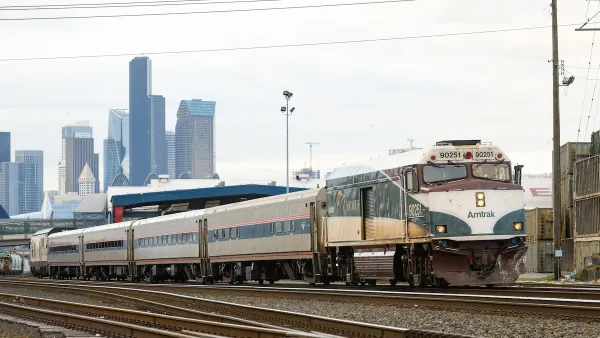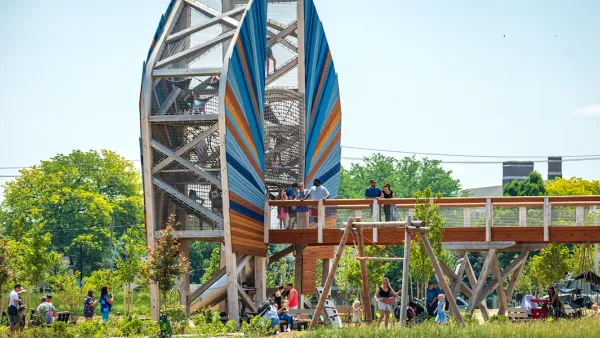Forest land and open space have been steadily gobbled up by development in the Pacific Northwest. A new initiative in Washington seeks to relocate some of developers' planned greenfield housing into cities.
Neal Peirce offers this look at some of the plans and regulations officials in Washington are pushing forward to protect open spaces.
"Over the past 30 years, more than 2 million acres of Cascade-range forest and farm land has given way to sprawling development. In 1990 the state of Washington did pass a growth management act that restrained some helter-skelter expansion. But development has fragmented open spaces, including wildlife habitat and corridors. With rapid expansion of the urban footprint, added paving has intensified flooding and erosion. There's concern that climate change will bring warmer winters with less snow pack, leading to summertime drought, water shortages and increased forest fire danger.
Responding to the dangers, a 'Cascade Agenda' was launched in 2005 - a 100-year conservation and preservation plan for 1.3 million acres of the Puget Sound region's most prized waters, mountains and communities. Some 225,000 private acres have already been conserved under the plan, which is rooted in an imaginative transfer of development rights."
FULL STORY: Regional Growth Futures: Getting It Right

National Parks Layoffs Will Cause Communities to Lose Billions
Thousands of essential park workers were laid off this week, just before the busy spring break season.

Retro-silient?: America’s First “Eco-burb,” The Woodlands Turns 50
A master-planned community north of Houston offers lessons on green infrastructure and resilient design, but falls short of its founder’s lofty affordability and walkability goals.

Delivering for America Plan Will Downgrade Mail Service in at Least 49.5 Percent of Zip Codes
Republican and Democrat lawmakers criticize the plan for its disproportionate negative impact on rural communities.

Test News Post 1
This is a summary

Test News Headline 46
Test for the image on the front page.

Balancing Bombs and Butterflies: How the National Guard Protects a Rare Species
The National Guard at Fort Indiantown Gap uses GIS technology and land management strategies to balance military training with conservation efforts, ensuring the survival of the rare eastern regal fritillary butterfly.
Urban Design for Planners 1: Software Tools
This six-course series explores essential urban design concepts using open source software and equips planners with the tools they need to participate fully in the urban design process.
Planning for Universal Design
Learn the tools for implementing Universal Design in planning regulations.
EMC Planning Group, Inc.
Planetizen
Planetizen
Mpact (formerly Rail~Volution)
Great Falls Development Authority, Inc.
HUDs Office of Policy Development and Research
NYU Wagner Graduate School of Public Service




























